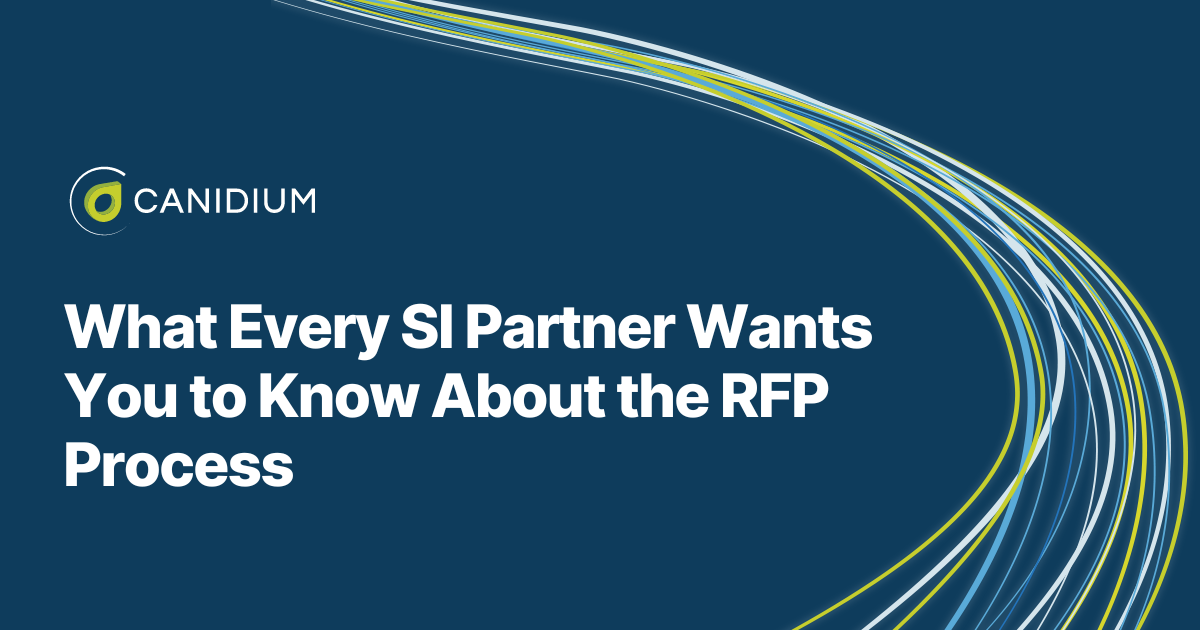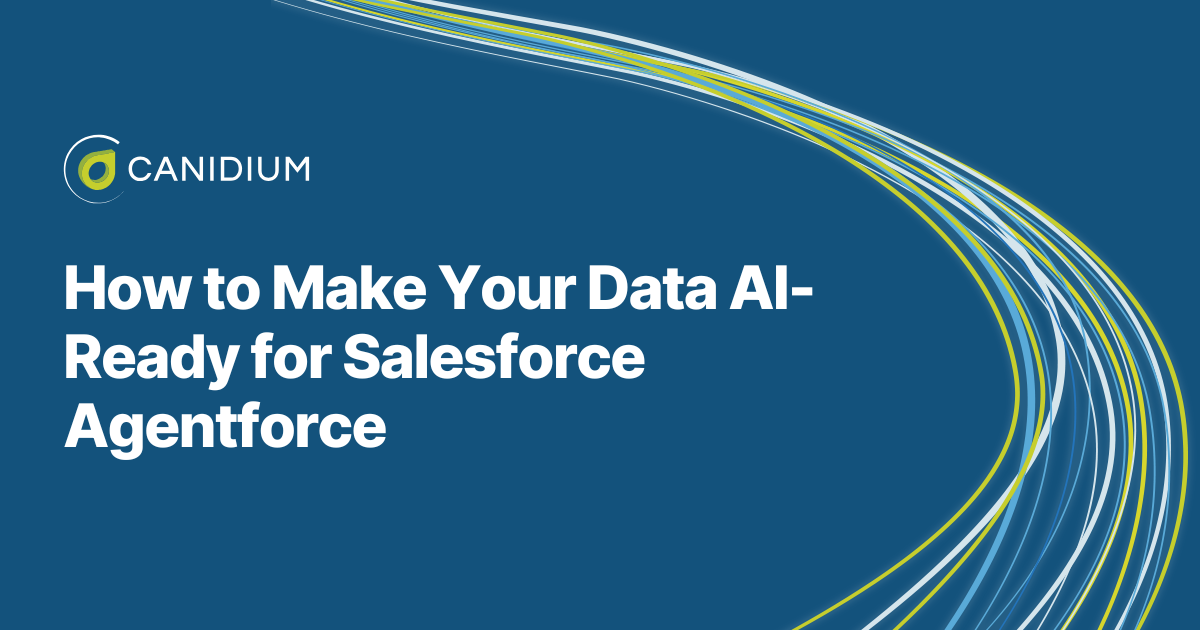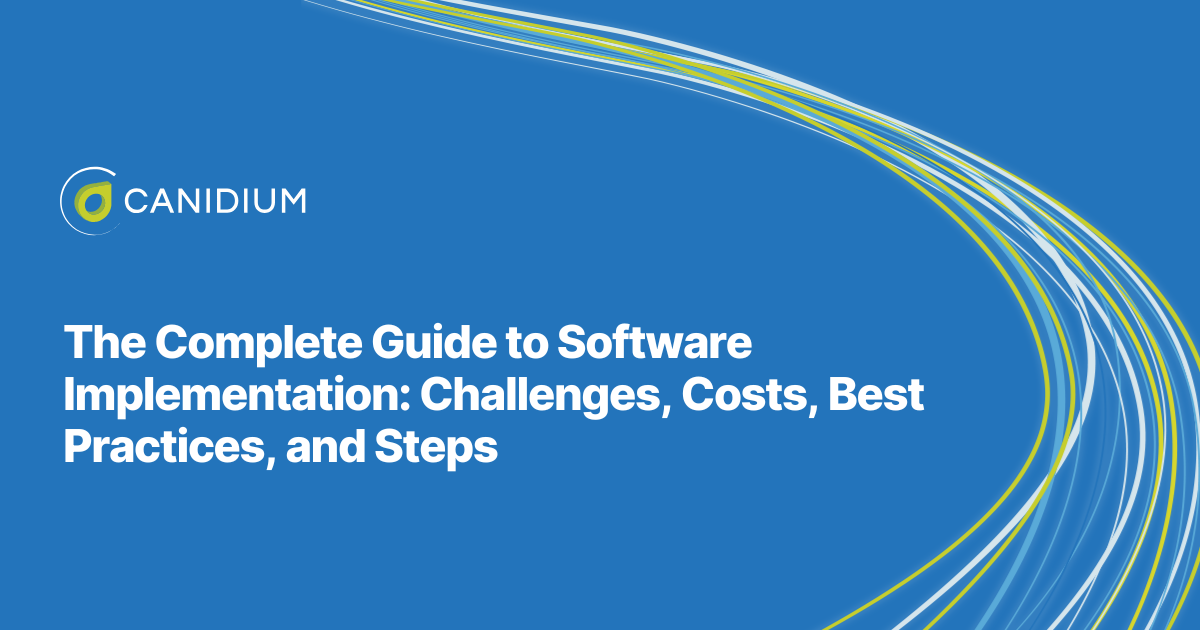RFPs are a common strategy for organizations hoping to choose vendors in an impartial and thorough way. As is true with any complex project, the RFP process can be susceptible to pitfalls, oversights, and errors.
As a long-standing software implementation partner that works with midsize to enterprise-level organizations, Canidium has extensive experience responding to RFPs. While we are happy to adhere to an organization's standards and regulations surrounding its purchasing process, we have learned much about getting the best bid out of an RFP.
We have written this article enumerating and explaining the possible obstacles to the best proposals to share our perspective as vendors. This article aims to inform and help organizations get the best bid possible for their projects—even if it's not Canidium.
How to Get the Best Bids From Your RFP
Organizations typically have strict rules their purchasing departments follow during RFP cycles. Sometimes, those rules work against the best interest of the project. Here are a few examples of that:
- When the flow of helpful communication between an organization and a software implementation partner is too tightly restricted
- When cost and timeline become the sole indicator of success
- When significant discrepancies in vendor pricing are not investigated
Choosing the right software implementation partner is critical to success in any project. While price and timeline are significant considerations, there are nuanced factors that play an equally vital role in ensuring a successful implementation of solutions like PriceFX. This article explores best practices for creating Requests for Proposals (RFPs) that help software implementation partners understand and address true pricing objectives.
Understand the True Value of Budgeting
Budgeting is crucial for any project, but can be a blindspot if it is the only consideration. Prioritizing quality and strategically allocating resources enhances competitiveness and mitigates risks. A well-defined budget provides clarity, accountability, and enables proactive adjustments. View budgets as investments for sustainable growth and success, not as a limiting factor.
Define Clear Project Goals
Clear project goals are crucial for successful software implementations. Request for Proposals (RFPs) should clearly articulate specific outcomes that align with the organization's strategic priorities. This alignment ensures that the software implementation delivers tangible value beyond technological enhancements. Clear project goals articulated in RFPs serve as guiding principles for successful software implementations. As far as SI partners are concerned, more details are always better.
Realistic Project Plans and Timelines
Realistic project planning is crucial for successful software implementation. Involving the Project Management Office (PMO) enhances project effectiveness by establishing clear processes and workflows for managing internal tasks. Integrating the PMO into the project planning process ensures comprehensive work requirements, realistic timelines, and successful software implementation.
Effective Communication with Software Implementation Partner
Open and transparent communication is vital for a successful partnership between an organization and a software implementation partner. Encouraging a collaborative approach where both parties share information and insights helps to align their efforts and work towards shared goals. It enables the partner to provide tailored solutions that meet the organization's unique needs and requirements.
Transparent communication also facilitates timely feedback, proactively addressing any issues or concerns, and preventing misunderstandings or delays. Moreover, it builds trust and strengthens the relationship between the organization and the partner, laying the groundwork for long-term collaboration and success.
Consider the “Iron Triangle”
The Iron Triangle concept in project management emphasizes the interdependence of scope, schedule, and resources. Changes in one element will impact the other two, requiring a delicate balance to be maintained for successful project implementation. Encouraging a balanced approach to these elements involves managing trade-offs and making informed decisions to ensure project success.
Alignment of Organization's Outlook with Goals
To craft a truly meaningful RFP response, it's crucial to advocate for a practical approach aligned with the organization's objectives. This fosters clarity, mitigates risks, and sets the stage for a successful partnership with the implementation partner. It's important to recognize the partner's limitations and expertise, manage stakeholders' expectations effectively, and align expectations with broader organizational goals. By setting achievable goals and priorities, organizations can mitigate risks and achieve their desired outcomes effectively.
Best Practices for Purchasing Team Communication
Clear communication between the purchasing team and other stakeholders is crucial for a transparent procurement process. Best practices like establishing clear evaluation criteria, conducting thorough vendor assessments, and ensuring transparency at every stage of the procurement cycle promote fairness and integrity. Additionally, aligning procurement decisions with organizational goals helps support the organization's long-term vision. By promoting transparency, collaboration, and alignment with organizational objectives, organizations can enhance the effectiveness of their procurement practices, driving value and success.
Evaluate Bids Thoughtfully
Evaluating a bid in response to an RFP for software implementation requires careful consideration of various factors to ensure the selected vendor can effectively meet the organization's needs. Here's a step-by-step guide on how to evaluate a bid carefully:
1. Review Compliance: Start by ensuring the bid complies with all the requirements outlined in the RFP. Check if the vendor has addressed all the specified criteria and provided the necessary documentation as per the RFP instructions.
2. Assess Experience and Expertise: Evaluate the vendor's experience and expertise in software implementation projects, particularly those similar in scope and complexity to yours. Review their track record, case studies, client testimonials, and certifications to gauge their capabilities.
3. Evaluate Proposed Solution: Assess the proposed solution offered by the vendor. Evaluate how well it aligns with the organization's requirements and objectives outlined in the RFP. Look for innovative approaches or unique features that may differentiate the vendor's solution from others.
4. Consider Price and Value: While price is an important consideration, focus on the overall value offered by the vendor's solution. Evaluate the total cost of ownership, including initial costs, ongoing maintenance, and support fees, to determine the long-term value proposition.
5. Assess Implementation Plan: Review the vendor's implementation plan and timeline to ensure it aligns with the organization's schedule and objectives. Look for clear milestones, deliverables, and a realistic timeline for project completion.
6. Evaluate Support and Training: Assess the vendor's support and training offerings. Ensure they provide adequate training resources and ongoing support to facilitate a smooth transition and adoption of the new software solution.
7. Check References: Reach out to the vendor's references to gather feedback on their past performance, reliability, and customer satisfaction. Ask specific questions related to project delivery, communication, and overall experience working with the vendor.
8. Consider Cultural Fit: Evaluate the vendor's cultural fit with your organization. Consider factors such as communication style, responsiveness, and compatibility with your organization's values and working environment.
9. Assess Risk Management: Identify and assess potential risks associated with the vendor's proposal, such as technology risks, resource constraints, or dependencies on third-party vendors. Evaluate the vendor's risk management approach and mitigation strategies.
10. Seek Clarifications: If any aspects of the bid are unclear or require further clarification, don't hesitate to reach out to the vendor for clarification. Clear communication is essential to ensure mutual understanding and alignment.
By following these steps and carefully evaluating each aspect of the bid, organizations can make informed decisions and select the right vendor for their software implementation project.
Optimizing RFP Processes: Best Practices for Successful Software Implementation Partnerships
Crafting a successful RFP for software implementation partners involves more than just specifying budget constraints and timelines. It requires a holistic approach that aligns project goals with organizational objectives, encourages effective communication, and ensures a realistic outlook. By following these best practices, organizations can enhance their chances of selecting an implementation partner who truly understands and addresses their pricing objectives, leading to a successful and value-driven implementation.
This article has underscored the significance of evaluating bids thoughtfully beyond mere cost considerations. Organizations must prioritize value over price, recognizing that quality often comes with a corresponding investment. By aligning RFPs with broader organizational objectives and fostering transparent communication with implementation partners, organizations can maximize the likelihood of selecting the right partner for their project needs.
Ultimately, we aim to empower organizations to create RFPs that facilitate meaningful engagements with software implementation partners, driving successful project outcomes. Whether partnering with Canidium or other vendors, we believe that adopting these best practices will enhance the effectiveness of the RFP process, leading to more successful software implementations and, ultimately, organizational success.








